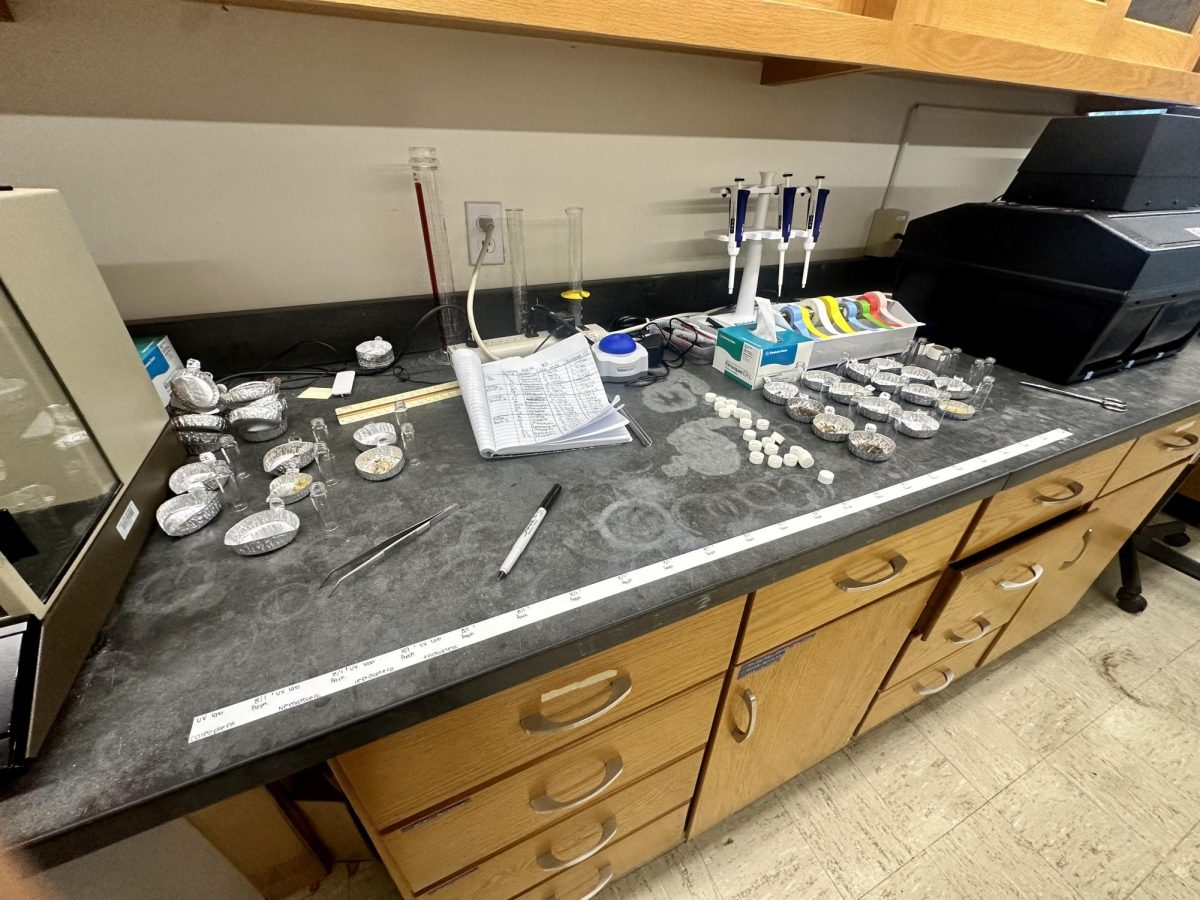Erica Bender, FCRH ’26, is a biological sciences major and English minor on the executive board of the Fordham Research Journal. She is conducting her research and attending Dr. Craig Frank’s research tutorials. Frank is performing research on white-nose syndrome in bats, andBender is focusing specifically on the bats’ diet compositions. She is investigating their summer and early fall diet composition and its effect on surviving the winter in the presence of fungus, which causes white-nose syndrome.
When looking into diets, Bender seeks to determine the most prevalent insect orders and species in the late summer and early fall diets of small brown bats in New York. It is essential to learn the nutritional composition of these insects and the value they provide to brown bats. Bender collects insects consumed by bats and sorts them according to their order later when they die. Once ordered, she will analyze their nutritional composition for lipids, proteins and other macromolecules. Another inquiry she seeks to answer is how the species and nutritional composition of these three small bat species change over the course of the summer and early fall. In answering this question, she has observed that “this year has been very interesting because we have had a lot of spotted lanternflies.” She explained that no spotted lanternflies were in the lab the previous year. She is excited to analyze the data being collected, as well as observe how the spotted lanternfly population near Fordham University’s Louis Calder Center affects the native insect population.
Elaborating on white-nose syndrome, she states that a pseudogymnoascus destructans fungus causes it. This fungus causes the bat’s nose to turn white physically. White-nose syndrome occurs during the winter, making it hard for them to breathe, eventually causing them to die. Her research focuses on the diet that affects their immunity to this white-nose syndrome. Insects she works with are dead when her lab receives them. There are two different traps used to trap insects: Malay traps and hawk traps. A Malay trap operates 24 hours a day and collects mostly flying insects. Hawk traps are set in Calder Lake and run during the night, trapping bugs by light. Hawk traps provide a more realistic idea of what bats will eat, as bats are nocturnal.
Bats won’t hunt during the day, which Malay traps would provide. Hawk traps show more about what bats would like to eat. The collection of insects that make up the bat’s diet will provide insights into whether they can help enhance bats’ immunity against white-nose syndrome. Findings have not been found yet. Bender is new to this lab and began research in May. She has only been collecting insects and will later analyze them and their nutritional compositions. “Right now is the field season, and we’re trying to get as many insects as possible. Then, in the winter, there are no insects. We’ll determine what to do then and observe the nutritional composition.”
Students can learn more about this research by Frank under his research interests on Frank’s Fordham page. Bender is doing broader research on the lantern fly project and other insects that make up bats’ nutritional composition. She also seeks to see how lanternflies affect the native insect population. She hopes to write up on the spotted lantern fly project by January and have it published. Bender said that lanternflies were a big deal last summer and not so much this summer. However, it is still getting worse. She wants others to remember that spotted lanternflies are concerning: “It is detrimental in a few years if we don’t get under control. It’s important to kill them as fast as they are, which is sad. In a few years, trees can die from these insects. The trees would be okay if it weren’t for these insects.”
Her research may validate the previous research suggesting that this winter, there’s an overlap between their immunity to white-nose syndrome and their diet. Other research she has read states that the variety of insects consumed is more important than the species of insect bats consume. “There’s not a lot of variety of the insects I collect, so we’ll see if the lack of variety affects their ability to combat white-nose syndrome,” Bender said. This winter will provide further clarification and validation of what previous research suggests.














































































































































































































